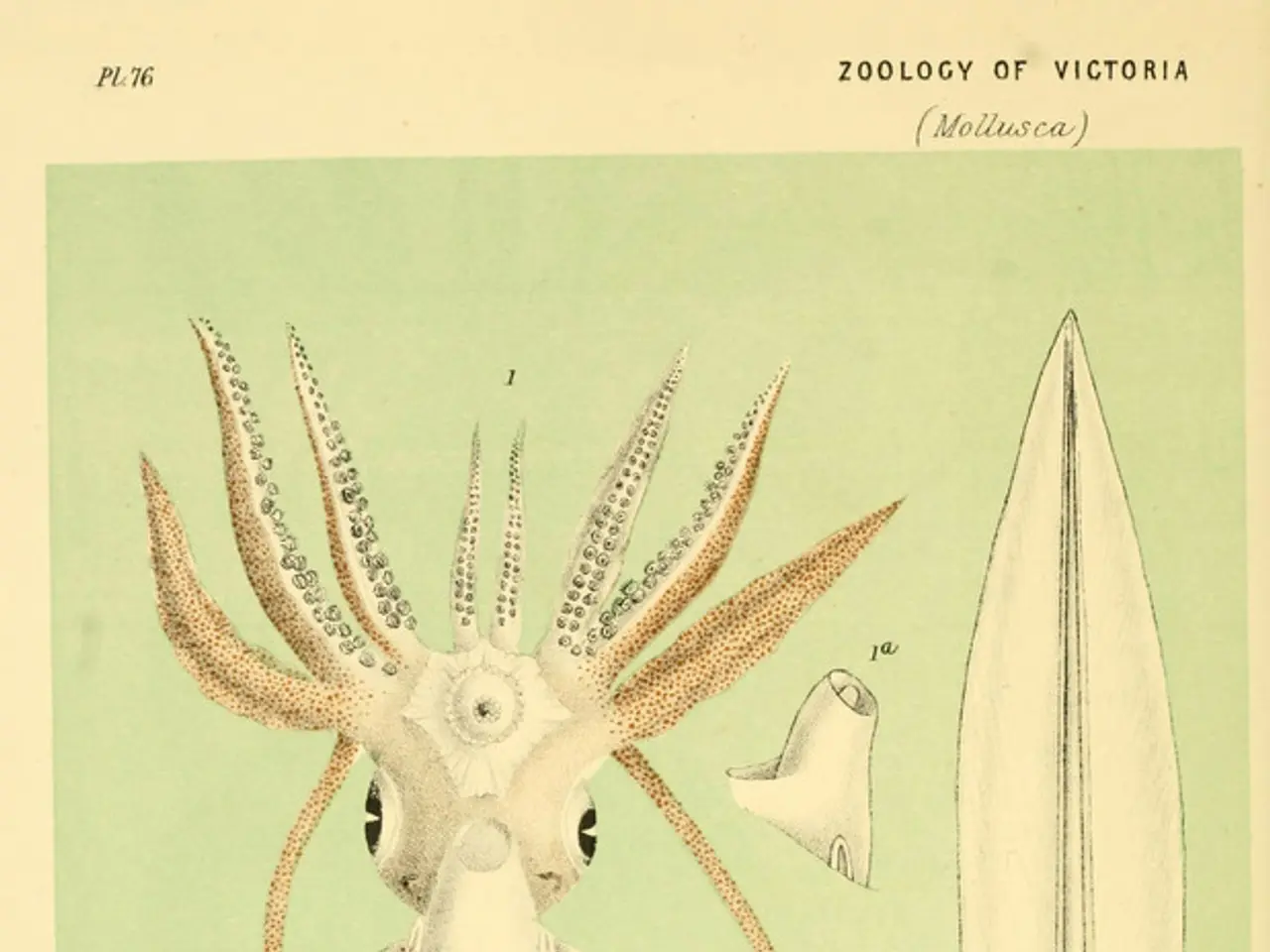Deep-sea squid battle caught on camera during equipment calibration by Australia's Marine National Facility
In a fascinating turn of events, researchers recently witnessed an aggressive display of behavior between two squids off the southwest coast of Tasmania during a research mission. The encounter was captured on video footage using an "acoustic-optical" tool deployed by the Commonwealth Scientific and Industrial Research Organization (CSIRO), a science agency of the Australian government.
Although the exact species of the squids remains unclear, the observed aggressive behavior and potential cannibalistic tendencies suggest that the creatures could be giant squids. Giant squids are known for their occasional aggressive interactions, including fighting among themselves, and cannibalism has been documented among large squid species.
While the CSIRO has not yet identified the species, recent viral videos and discussions about squid aggression commonly involve giant squids in southern ocean regions like around Tasmania. Other possibilities include the neon flying squid or Nototodarus gouldi, but these species are less likely given their lack of reported aggressive behavior combined with frequent cannibalism.
A study from October of last year found that some squid species exhibit a high amount of cannibalism, with 42% of the Gonatus onyx's prey coming from cannibalism. Danna Staaf, a researcher with a PhD from Stanford's Gilly Lab, speculates that other squid species might engage in the same kind of opportunistic cannibalism as the Humboldt squid, which, while not common in the south Pacific, exhibits similar characteristics to the squids in the video.
However, Michael Vecchione, a researcher at the Smithsonian's NMFS National Systematics Laboratory, suggests that it's possible that two species were involved in the encounter, making it simple predation rather than cannibalism. This theory is supported by the fact that the encounter occurred only 443 feet below sea level, a shallower depth than typical for giant squid interactions.
The research mission aims to gather information on the behavior of deep-ocean sea creatures. The findings from this encounter could provide valuable insights into the behavior and interactions of these mysterious creatures, contributing to our understanding of the deep ocean ecosystem.
As the investigation continues, scientists and enthusiasts alike are eagerly awaiting the identification of the species involved in this intriguing encounter off the coast of Tasmania.
- The enthusiasm among scientists and enthusiasts for the identification of the species in the intriguing encounter off Tasmania's coast could lead to significant advancements in our knowledge of health-and-wellness and fitness-and-exercise, particularly focusing on the behaviors and interactions of deep-ocean species.
- Given the nature of the aggressive behavior observed in the squid encounter off Tasmania, and considering the documented cannibalism among large squid species like the giant squid, fostering healthier ocean environments could potentially mitigate such behaviors, as stressors like pressure from human activities or climate change might contribute to such activites in these species.
- As the study of cannibalism and aggression continues among various squid species, further science collaborations between organizations such as the CSIRO, Stanford's Gilly Lab, and the Smithsonian's NMFS National Systematics Laboratory may illuminate healthier behaviors and possible prevention strategies, contributing to the field of science and promoting healthier ecosystems in different sea species and their diverse environments.




